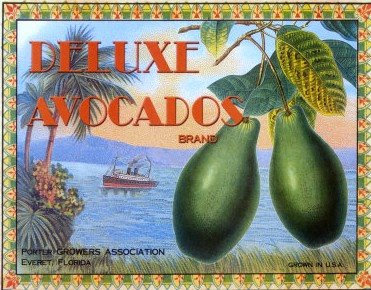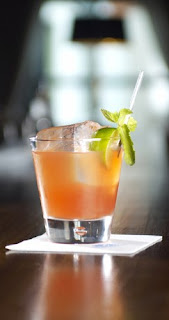 Derby Day is about more than just a horse race. It’s a celebration of a State, its cultural and especially its food. I’m not discounting the Kentucky Derby as a major sporting event that attracts worldwide attention. But for many a lot of the whoopla that has grown up around it is more captivating than the race itself (which after all, only lasts a couple of minutes).
Derby Day is about more than just a horse race. It’s a celebration of a State, its cultural and especially its food. I’m not discounting the Kentucky Derby as a major sporting event that attracts worldwide attention. But for many a lot of the whoopla that has grown up around it is more captivating than the race itself (which after all, only lasts a couple of minutes).It is unique among sport for its festivity and tradition. I suppose the Super Bowl comes closest but it’s just so much beer and guacamole by comparison. It’s Janet Jackson vs. The Queen. Cheap silly hats vs. expensive silly hats. Indoors in February vs. outdoors in May.
In most places, Memorial Day marks the unofficial beginning of summer. In Kentucky, this transition takes place on Derby Day, the first Saturday in May. It is the green light to wear white or seersucker; put on patent leather or spectator shoes. It is the safe date to plant a garden without further fear of frost.

As a child and already aspiring cook, I remember looking forward to the Sunday Courier-Journal the weekend before the Derby. In that issue complete with color rotogravure, Food Editor Cissy Gregg would wow me with what the perfect Derby Day hostess would be making that year.
Mere mention of the Kentucky Derby to most people brings to mind mint juleps. On the day of the race they flow like water at Churchill Downs—almost 120,000 mint juleps are imbibed each year. To be sure some locals serve them on this occasion as well—with a wink and a nod. Any other day of the year and you’ll be hard pressed to find someone in the Bluegrass State sipping one of these syrupy libations. Bourbon is revered in Kentucky but most often drunk neat or with a bit of branch. The popularity of mint juleps goes back to the days when river boats steamed the Ohio and Mississippi Rivers. Then a favorite morning eyeopener among Southern planters, today it’s more prevalent in New Orleans than Louisville. Personally I’d rather have a mojito any day.
 A better use of bourbon is in bourbon balls: cream-filled chocolates flavored with whisky and pecans. First concocted in 1936 by Ruth Booe of Frankfort, today the confection is omnipresent especially at Derby time. You can order bourbon balls made from the original recipe from Rebecca Ruth Candy. (I love their candy but they have one of the worse logos I’ve ever seen.) There is another type of bourbon ball often made at home. The easy, no-cook recipe includes crushed vanilla wafers, chopped pecans, cocoa and powdered sugar.
A better use of bourbon is in bourbon balls: cream-filled chocolates flavored with whisky and pecans. First concocted in 1936 by Ruth Booe of Frankfort, today the confection is omnipresent especially at Derby time. You can order bourbon balls made from the original recipe from Rebecca Ruth Candy. (I love their candy but they have one of the worse logos I’ve ever seen.) There is another type of bourbon ball often made at home. The easy, no-cook recipe includes crushed vanilla wafers, chopped pecans, cocoa and powdered sugar.Before the Colonel and his chicken, Kentucky’s culinary claim to fame was country hams. Similar to hams produced in Virginia and other parts of the region, they are dry-cured, aged and more akin to prosciutto than that wet pink stuff they sell at the supermarket. Unlike prosciutto, country ham is cooked: soaked, baked or boiled and glazed. Most often it is served at room temperature; sliced paper thin. In Kentucky country ham is bound to show up at most festive get-togethers from Thanksgiving until Derby Day.
Celebrating the Derby has inspired a few original culinary creations, too. Probably the first was Benedictine spread or dip, named for Louisville catering company owner Miss Jennie C. Benedict. At the turn of the last century, tea parties were more popular than buffets and Miss Benedict’s dainty little green sandwiches were all the rage. Still popular today, it more often appears as a dip (thinned with sour cream) than as a sandwich filling.

Grits are something only a true Southerner can love (or an Italian who calls them polenta). Cheese grits on the other hand, whether cooked on top the stove or baked in a casserole, are a whole lot more appealing. I can’t claim that cheese grits were first served in conjunction with the Derby but they have become a prerequisite for many Derby Day breakfasts and brunches. I first heard Phyllis George, a former Miss America and then wife of Kentucky Governor John Young Brown, tout their charm in the late 1970s. This is one of the few incidences where I can unequivocally endorse the opinion of a beauty pageant contestant.
Best known if not loved is a chocolate chip and walnut dessert called Derby-Pie®. Created in 1954 by the Kern family, “Derby Pie” became so popular that Kern’s Kitchen, the bakery that makes the pie, trademarked it in 1968. Since then they’ve sued the likes of PBS, Bon Appétit and Nestlé for the unauthorized use of the name. The result is you’ll find a whole lot of pies at Louisville restaurants that seem to be so much the same thing with a lot of different names—Run for the Roses Pie, Churchill Downs Pie, Triple Crown Pie, etc.—but if you want a Derby-Pie® you’ll have to order one from Kern’s.
Over the years, my Kentucky heritage has been the brunt of a few jokes—more than a few coming from me. Regardless, on May 2 at 4 p.m. you won’t need Twitter to know what I’m doing. As on each first Saturday in May in most of the years I can remember I’ll be in front of the TV. I’ll watch the crowd stand, the horses parade out of the paddock and hear the band play one of the few songs I know all the words to. For that moment, whatever the weather, the sun will shine bright.
Benedictine Dip
1 large cucumber, peeled
8-ounce package cream cheese, softened
2 tablespoons grated onion
¼ teaspoon salt
2 tablespoons sour cream
1 tablespoon mayonnaise
Dash green food coloring (optional)
2 tablespoons chopped fresh dill
Grate cucumber and drain in a fine mesh sieve. Combine cucumber, cream cheese, onion, salt, sour cream, mayonnaise and food coloring (if used) in a food processor. Transfer to a bowl and stir in chopped dill. Taste for seasoning. Serve with crudités or potato chips.
Makes about 1½ cups.
First Saturday in May Pie
1 9-inch fully baked pie shell, cooled
1 cup granulated sugar
½ cup (1 stick) unsalted butter, melted
½ cup all-purpose flour
2 large eggs, lightly beaten
6 ounces chocolate chips
1 cup coarsely chopped or broken walnuts
2 tablespoons bourbon
Whipped cream
Preheat oven to 350 degrees.
In a large mixing bowl, combine the sugar, melted butter, flour and
eggs, using a whisk. When the mixture is smooth, stir in the chocolate chips, walnuts and bourbon
Pour the filling into the baked pie shell and bake for 30 to 35 minutes in the preheated 350-degree oven.
Cool completely on a rack and serve at room temperature with whipped cream.
Makes 1 9-inch pie.






















